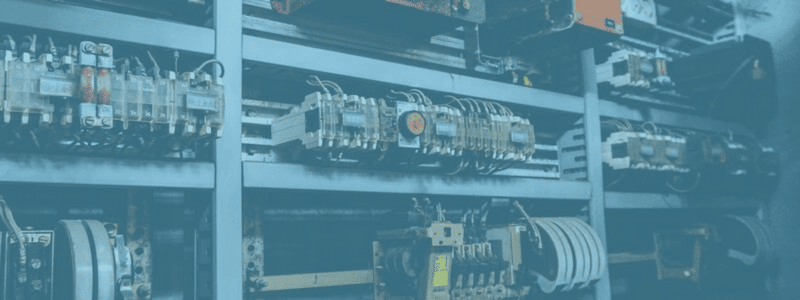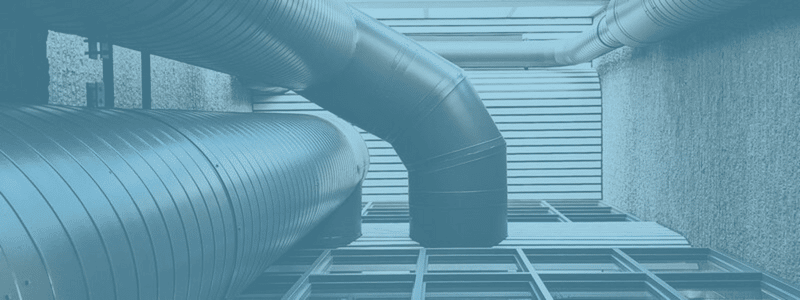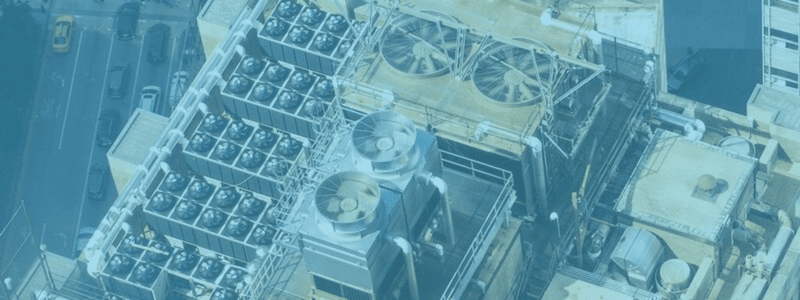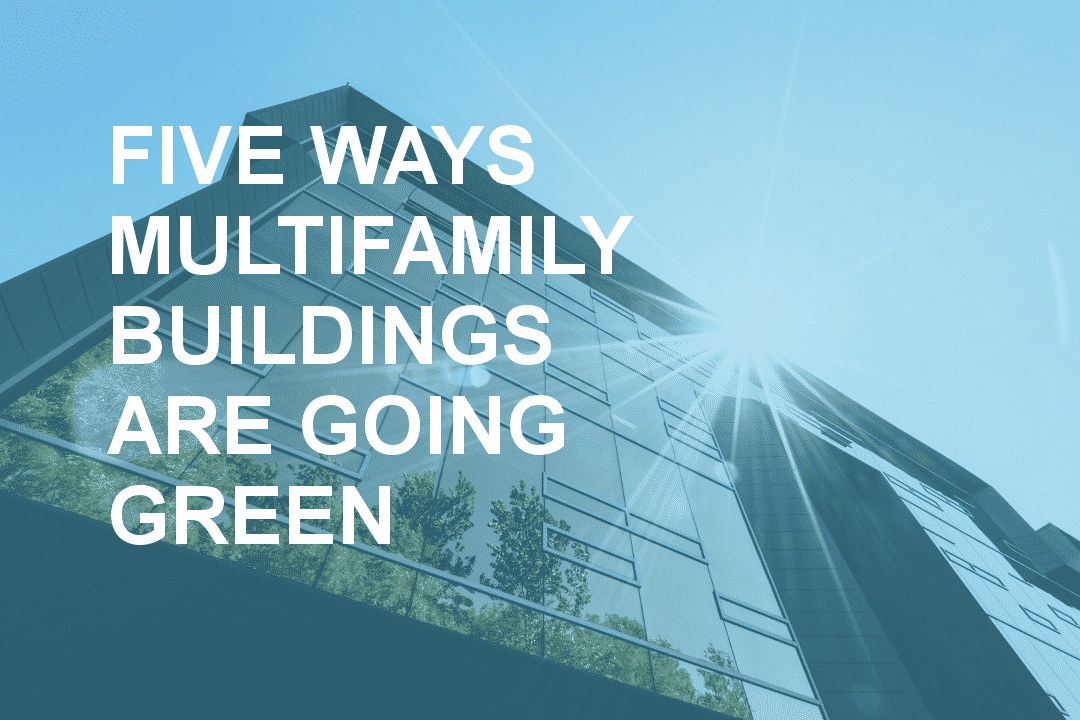More than 38 million Americans live in buildings with five or more households. That’s a lot of opportunity for energy efficiency. Going green not only satisfies tenants’ demands but adds to the overall value of development – both reasons property owners and managers benefit from building upgrades that improve energy efficiency multifamily housing. It’s time buildings become more sustainable or lose out to the competition.
“What used to be exceptional is now every day,” National Multifamily Housing Council’s Dave Borsos told the American Apartment Owners Association in an interview.
Borsos is right. In 2017, 42 percent of all multifamily financing provided by Fannie Mae qualified for its Green Rewards program, which offers lower interest rates to finance apartment properties that are already green certified or whose owners pledge to reduce energy use by at least 25 percent with renovations.
The savings aren’t designated solely to lending programs. According to the 2017 NHMC/Kingsley Renter Preferences Report, which surveyed 269,000 renters, 61 percent of tenants said they were either “interested” or “very interested” in living in apartment buildings that have been certified for energy efficiency or sustainable design. Efficiency is no longer considered an amenity but instead an expected standard feature.


“There is no cost difference anymore – green has become standard practice,” Borsos explained.
Still, not every property owner or manager has the means to revamp a building – primarily while tenants reside there ultimately. Fortunately, some steps will not only reduce energy consumption in a building but also save money for tenants and owners alike.
After all, upgrades reduce residents’ utility bills, energy consumption, and maintenance in common areas where the owner might pay for water and electricity. For example, actions as simple as replacing old models with programmable thermostats can save a family an average of $180 a year in electricity usage.
Interested in learning how property owners and managers can reduce energy consumption in multifamily buildings? Look no further than the following five tips for turning a multifamily building green:
Seal Windows and Doors
Many older windows and doors allow a lot of air to flow in and out of an apartment, taking hot or cool air. Replacing windows and doors with newer options that provide a more insulated barrier and better seal will prevent burning and cool air from being lost, reducing the energy needed to keep a unit comfortable.
If replacing windows and doors isn’t in the budget, simply caulking around windows and adding weather stripping around doors can make a dramatic difference. According to the Environmental Protection Agency, weatherizing windows and doors with caulk, weather stripping, and spray foam can save as much as 20 percent on heating and cooling costs – and 10 percent overall on energy consumption.
Energy Star Certified HVAC Appliances
The Energy Star qualifications were established to reduce appliance energy consumption and save consumers money at the same time. The label can make a significant difference in efficiency. According to the ENERGY STAR website, “The typical household spends $2000 a year on energy bills. With ENERGY STAR [a household] can save 30% or about $575 on energy bills, while avoiding more than 5,500 pounds of greenhouse gas emissions”. Typical energy savings are:
- Refrigerators – 20 percent reduction in energy use
- Freezers – 20 percent reduction in energy use
- Washing machines – 37 percent reduction in energy use
- Water coolers – 45 percent reduction in energy use
Of course, replacing appliances can be costly for multifamily property owners. Keep in mind, however, that, eventually, all devices will need to be replaced. Property owners and managers, therefore, can pledge to replace all appliances with energy-efficient multifamily housing models moving forward. Admittedly, the initial costs might be a few dollars more. Still, the decision will save money for current and future tenants, attracting renters and enticing them to stay longer once they are there.


Install Energy-Efficient Lighting
Did you know that if every American home replaced one traditional light bulb with an ENERGY STAR-certified model, the result would be about $600 million in saved energy costs each year? It’s not hard to believe once you understand that compact fluorescent light bulbs – CFLs – use only about a quarter of the electricity used by incandescent bulbs.
Not only do traditional light bulbs use more energy, but they burn out quicker, as well, and need to be replaced. How much do property managers spend on maintenance costs for light bulb replacement alone? Swapping out all light bulbs in a property with either CFLs or LED bulbs is a task that will quickly pay for itself.
While swapping out light bulbs, property managers can also look at the old T12 lamp fixtures in their buildings. Not sure what those are? You’ll recognize T12s as the long, halogen bulbs mounted in many common areas such as laundry rooms and parking areas.
Simply swapping the T12s out for the more efficient T8 bulbs produces a 20 percent reduction in energy consumption.
Replace HVAC Systems
The type of heating and cooling systems used in apartment buildings can make a significant impact on energy consumption. According to the U.S. Department of Energy, 30 percent of HVAC costs are lost to waste. In addition, property owners who upgrade an older model – anyone older than ten years old will not be ENERGY STAR-certified – with an energy-efficient HVAC system can save up to 40 percent on cooling costs.
Replacing HVAC units isn’t the only way to improve heating and cooling efficiencies. Apartments using baseboard heat, wall heaters, or radiator heaters will consume far more energy than a forced-air furnace or air conditioner. Upgrading the entire apartment complex can be expensive, but it can also be the best long-term plan.
Make Data-Based Decisions
Of course, the path to actual energy efficiency involves continuous improvement. How are upgrades reducing energy consumption, and what areas still need improvement? If capital investment is required, how much will it pay for itself?
“Owners and operators often have a multitude of communities, with a wide variety of mechanical asset types across the country and often in very diverse places. As a result, it can become a very cumbersome task to understand ‘What am I spending where?’ and ‘Why am I spending that money?'” explained Motili’s vice president of multifamily Matthew Sallee.
Fortunately, apps and other data-driven platforms are available to help property owners and managers navigate the road to net-zero energy consumption. Motili offers just such a platform, including asset tagging and management.
Each time Motili dispatches a technician to service an HVAC system, data obtained from the job is used to help create a multi-year plan for the property. That way, building owners and property managers can devise energy efficiency plans.


Motili’s HVAC Energy-Efficient Multifamily Housing
Motili is the solution to cost-effective equipment, installation, repair, and maintenance. We combine people, processes, and technology to create a unique and nationally supported app that will help property owners of all kinds to manage their heating and cooling efforts quickly.
Our solution will help you cut costs and achieve new levels of efficiency and performance.
Data analysis will continue to be performed by the on-demand service industry, including HVAC technicians, to match consumer needs to service providers.
Motili’s platform goes even further by helping building managers make intelligent and proactive business decisions with access to comprehensive asset tracking, replacement optimization, and planned repairs across their property portfolios.












